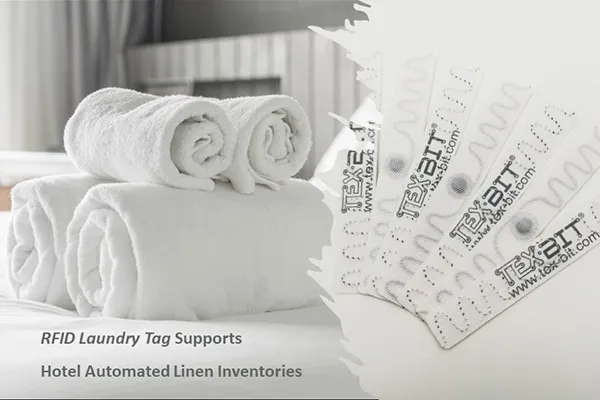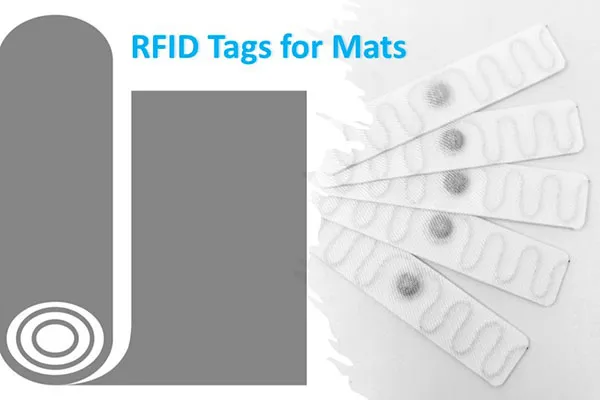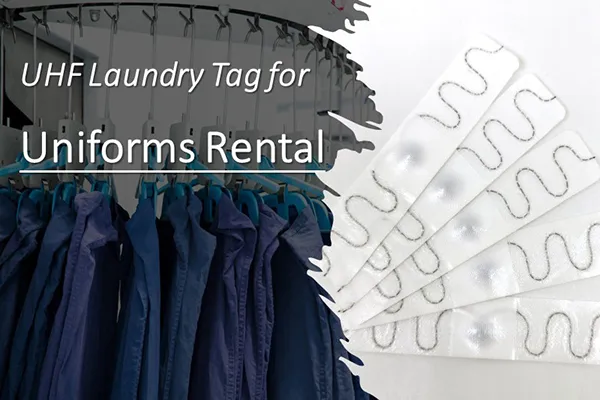In the fast-paced textile services industry, businesses face relentless pressure to streamline operations, reduce costs, and deliver superior service. Whether you’re managing healthcare linens, hotel linens and uniforms, or processing thousands of rental textiles in commercial laundries, efficient textile management and traceability are crucial for smooth operations. As companies grapple with the growing demands for accurate inventory tracking and operational transparency, many are turning to advanced technologies like Radio Frequency Identification (RFID) to meet these challenges.
RFID offers significant advantages over traditional methods, including automating inventory tracking, preventing losses, and reducing labor costs—all of which contribute to better profitability and customer satisfaction. But is RFID the right solution for your textile services business? In this article, we’ll delve into how RFID works, its potential benefits and challenges, and how to assess if it’s the right investment for your operation. Whether you’re managing large-scale laundry services or a hospitality group, understanding RFID’s impact can help you make a well-informed decision for long-term success.
What is RFID and How Does It Work in Textile Services?
RFID is a system made up of four key components: an RFID tag (also called a transponder), a reader, an antenna, and specialized software. Each RFID tag contains a unique identification (UID) number that is transmitted to the reader when it enters the electromagnetic field generated by the antenna. The reader interprets the signal and sends the UID to the software, where it is used for various applications such as auto-sortation, route accounting, and inventory tracking.
In the textile industry, RFID tags are embedded in garments, linens, or other textile products, enabling tracking throughout their lifecycle. Unlike traditional barcode systems, RFID offers several advantages, including the ability to read multiple items simultaneously (without the need for line-of-sight scanning) and providing up to 99.9% accuracy. This makes the technology ideal for fast-paced environments where bulk reading, on-the-fly processing, and conveyor belt scanning are essential. For many textile service providers, RFID opens new possibilities for reducing operational costs and enhancing growth potential.
Common Challenges in the Textile Services Industry
The textile services industry faces several operational challenges that can directly impact profitability and customer satisfaction. Let’s explore three of the most pressing issues:
1, Inventory Management:
Managing large-scale textile inventories—particularly in rental and laundry services—can be complex. Items like flat linens, towels, uniforms, or gowns are constantly in circulation, making it difficult to maintain real-time data on inventory levels and item status. Without a reliable system, it’s challenging to track which textiles are available, or in use. This can lead to supply shortages, overstocking, or even service disruptions.
2, Loss and Damage:
With a high volume of textiles in constant movement, losses and damages are common issues. Items can be misplaced, mistakenly taken by employees or customers, or damaged during use. These situations increase costs, as businesses must frequently replace lost or damaged items. Furthermore, without a tracking system, it’s nearly impossible to determine where and how losses occurred, making accountability difficult.
3, Labor and Time Costs:
Traditional methods such as manual data entry or barcode scanning are time-consuming and prone to human error. Managing textile workflows—including pick-up, sorting, washing, and delivery—requires considerable manual labor. This not only increases the risk of mistakes but also slows down operations and drives up labor costs. Additionally, businesses struggle to maintain efficiency, as manual tracking methods significantly slow the overall process.
How RFID Technology Solves Key Pain Points in Textile Services
RFID technology offers effective solutions to the common challenges faced by textile service providers. By automating inventory tracking, enhancing visibility, and reducing operational inefficiencies, RFID helps businesses optimize their textile management processes and improve profitability.
1, Automated and Accurate Inventory Management
One of the most significant benefits of RFID for textile management is the dramatic improvement in inventory accuracy. Unlike traditional methods that rely on manual counting or barcode scanning—both of which are prone to human error—RFID enables seamless, automated tracking of textile assets.
Each RFID-tagged linen, uniform, or mat is automatically identified and recorded whenever it enters or exits a facility. This eliminates guesswork, ensures precise stock levels, and prevents issues like overstocking or shortages. Businesses can reduce unnecessary reorders, optimize inventory distribution, and improve overall supply chain efficiency.
2, Reduced Linen Losses and Misplacement
Linen losses represent a major financial burden for textile service providers. Items frequently go missing due to misplacement, theft, or accidental removal by customers or employees. Without an effective tracking system, recovering lost inventory is difficult, and replacement costs can add up quickly.
RFID technology minimizes losses by providing real-time visibility into each item’s location and usage history. Alerts can be triggered when textiles remain unreturned for an extended period, enabling proactive intervention before significant losses occur. Additionally, RFID tracking helps improve accountability by identifying where and when items disappear, reducing the likelihood of theft or misuse.
3, Improved Efficiency and Labor Cost Reduction
Manual linen tracking is not only inefficient but also labor-intensive. Traditional barcode-based scanning requires line-of-sight reading, which is slow and error-prone, while handwritten records introduce inconsistencies. These inefficiencies increase labor costs and reduce productivity.
RFID technology enables fast, bulk scanning of hundreds of textiles simultaneously, eliminating the need for manual sorting or individual barcode scans. This automation:
- Reduces processing time for laundry facilities
- Minimizes labor-intensive tracking efforts
- Speeds up check-in, sorting, and distribution processes
- Allows staff to focus on higher-value tasks rather than routine inventory management
By integrating RFID, businesses can streamline operations, improve workflow efficiency, and significantly lower labor costs.
The Advantages and Challenges of RFID Technology
RFID technology offers several advantages that make it an attractive solution for textile services businesses:
- High Accuracy: RFID systems drastically reduce human error by automating inventory tracking and management. With the ability to scan multiple items simultaneously, operations are streamlined, and efficiency is improved.
- Bulk Reading Capability: RFID enables fast processing in environments where large volumes of textiles need to be handled daily, speeding up workflow.
However, businesses must also consider the challenges that come with RFID adoption:
- Initial Investment: The upfront costs of implementing an RFID system—including purchasing tags, readers, antennas, and software—can be high, particularly for smaller businesses with limited budgets.
- Ongoing Maintenance: RFID systems require regular updates and maintenance to function optimally. Without proper upkeep, equipment malfunctions or data inaccuracies may occur, potentially negating the benefits.
Ultimately, while RFID offers substantial benefits, businesses must weigh the initial costs and consider ongoing maintenance requirements to ensure the system supports their long-term goals.
How to Determine if RFID is Right for Your Textile Services Business
Before investing in RFID, businesses must evaluate both the long-term benefits and the upfront costs. Here are a few key factors to consider:
- Assess Business Needs:
Does your company face challenges with inventory management, or theft prevention? If so, RFID could provide the solutions you need to address these issues effectively. - Cost-Benefit Analysis:
Although the initial cost of RFID can be significant, the long-term benefits—such as increased efficiency, reduced losses, and lower labor costs—can result in a solid return on investment. - Business Scale and Growth:
If your business is expanding or handling larger inventories, RFID can help support growth by providing the tools necessary to manage more complex logistics and higher volumes.
As labor, inventory, and utility costs continue to rise, businesses that use tools like RFID to meet customer demands and attract new clients will be well-positioned for long-term profitability.
Conclusion
RFID technology has the potential to transform textile services businesses by improving efficiency, reducing costs, and enhancing traceability. While RFID may not be necessary for every business, those managing large-scale inventories or dealing with significant operational challenges should seriously consider the benefits.
Are you ready to explore a customized RFID solution for your business? Contact us today to learn more.




